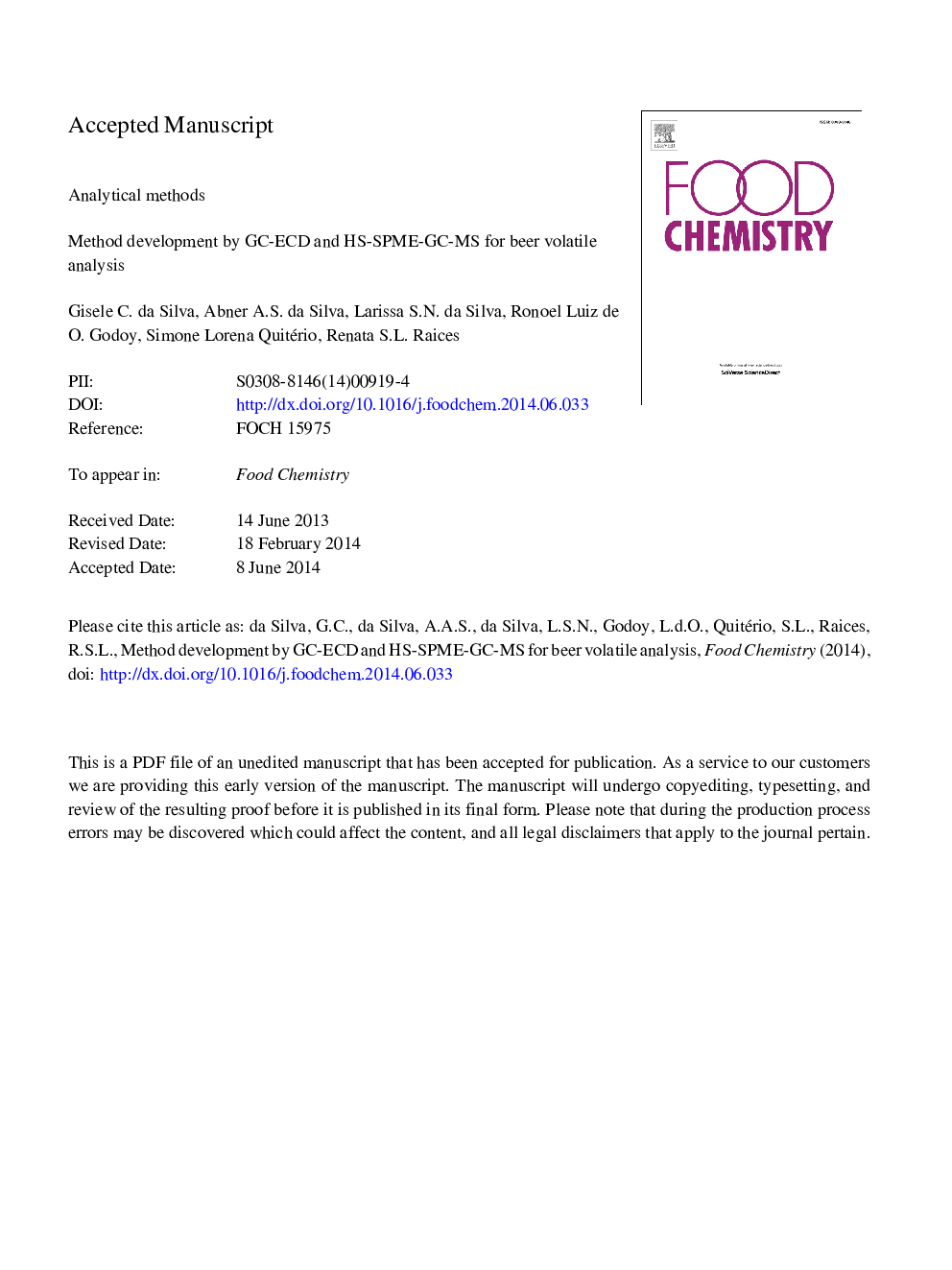| Article ID | Journal | Published Year | Pages | File Type |
|---|---|---|---|---|
| 7596123 | Food Chemistry | 2015 | 24 Pages |
Abstract
Two methods for the extraction, identification and quantification of the highest occurrence and lowest perception threshold off-flavours in fifteen different samples of Brazilian Pilsner beers were developed. For this purpose, headspace solid phase microextraction in combination with a gas chromatography coupled to a mass spectrometric detection (HS-SPME-GC-MS) as well as headspace extraction in combination with a gas chromatography coupled to electron capture detection (HS-GC-ECD) were evaluated. The first and the second methods were used for esters and vicinal diketones analysis, respectively. All data were comprehended below the taster's threshold detection limit: ethyl acetate 39.48 ng mLâ1 (RSD mean value 4.2%), isoamyl acetate 3.88 ng mLâ1 (RSD mean value 3.4%), ethyl hexanoate 0.61 ng mLâ1 (RSD mean value 3.1%) and 2,3-butanedione 0.10 ng mLâ1 (RSD mean value 2.9%). The validated method demonstrated to be useful for the analysis of highest incidence beer off-flavours.
Keywords
Related Topics
Physical Sciences and Engineering
Chemistry
Analytical Chemistry
Authors
Gisele C. da Silva, Abner A.S. da Silva, Larissa S.N. da Silva, Ronoel Luiz de O. Godoy, Luciana C. Nogueira, Simone L. Quitério, Renata S.L. Raices,
